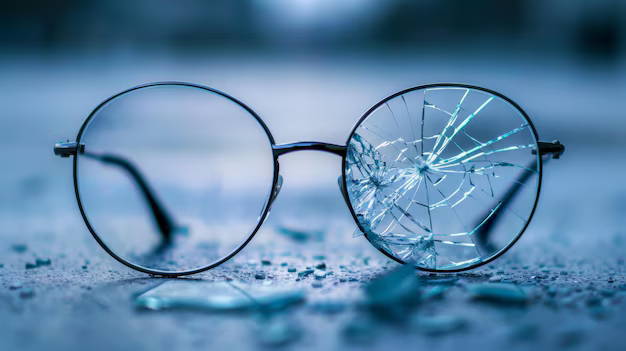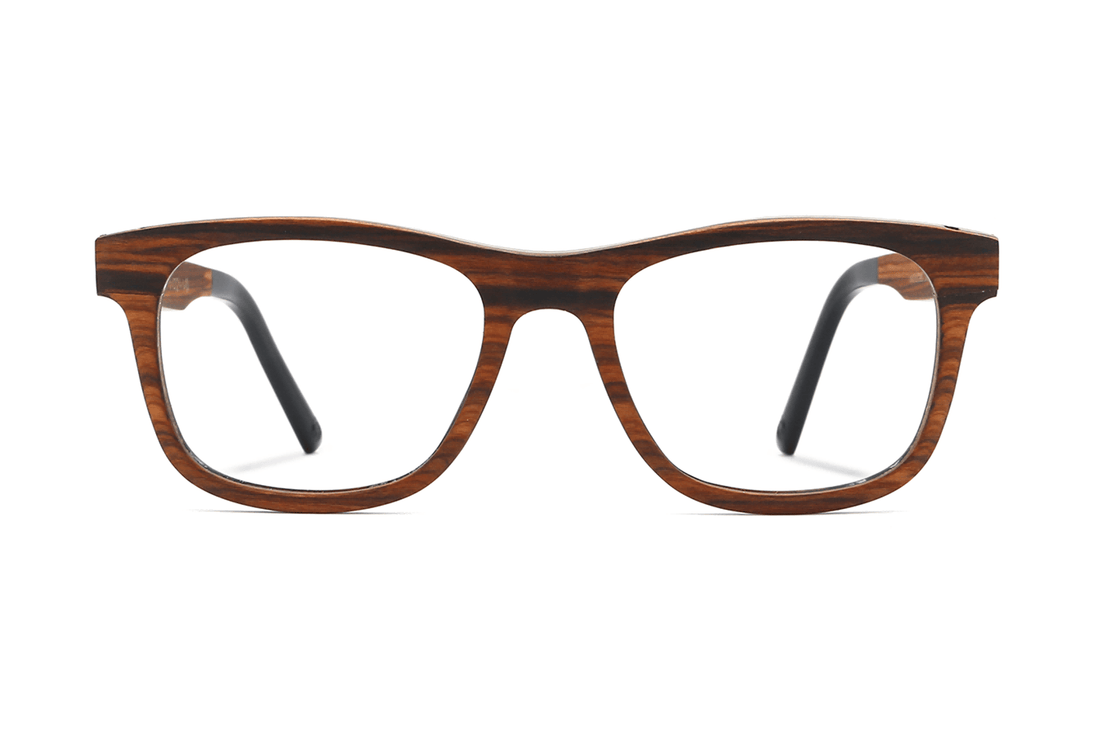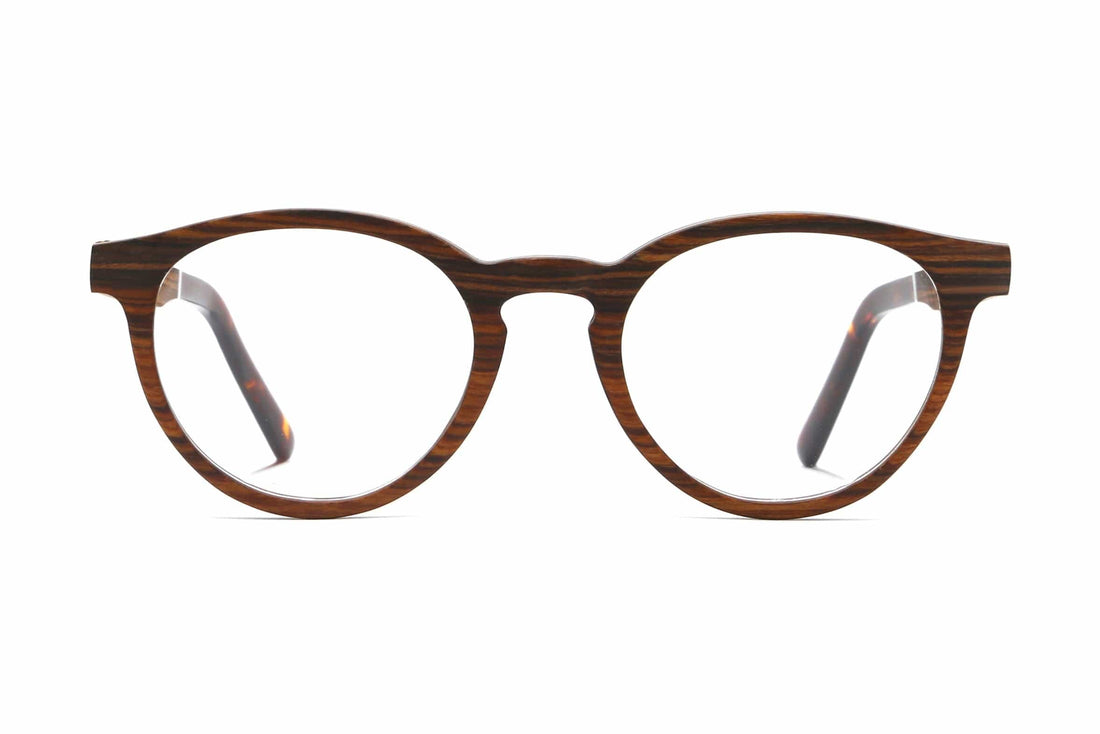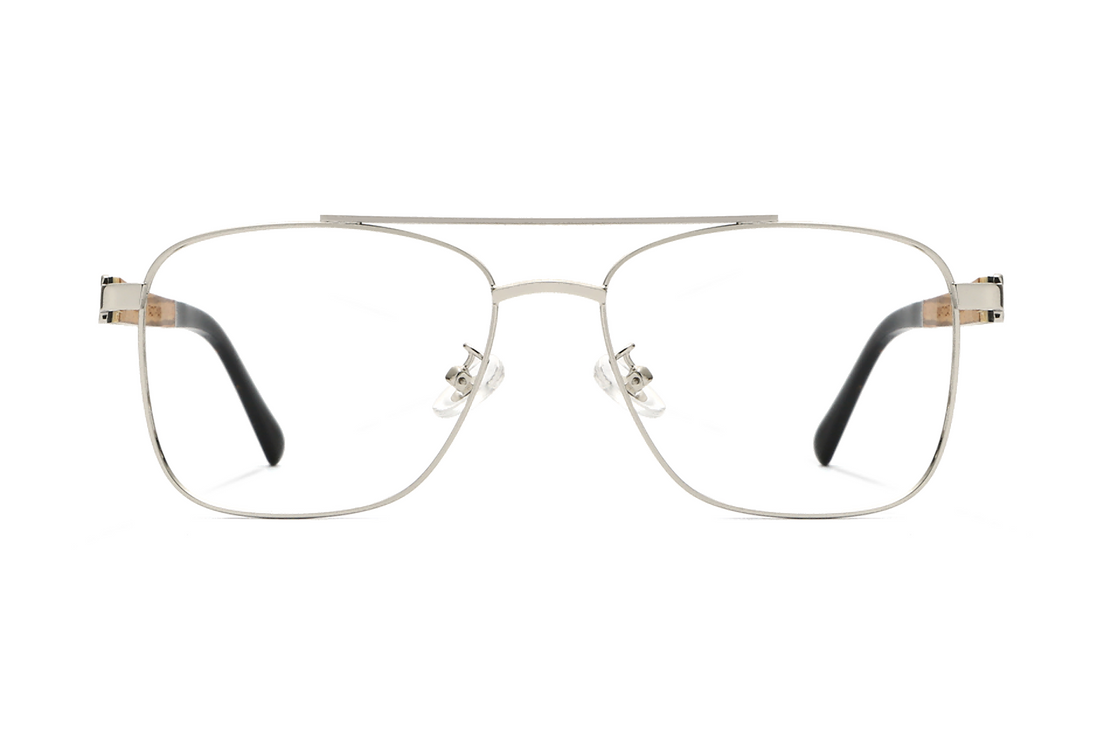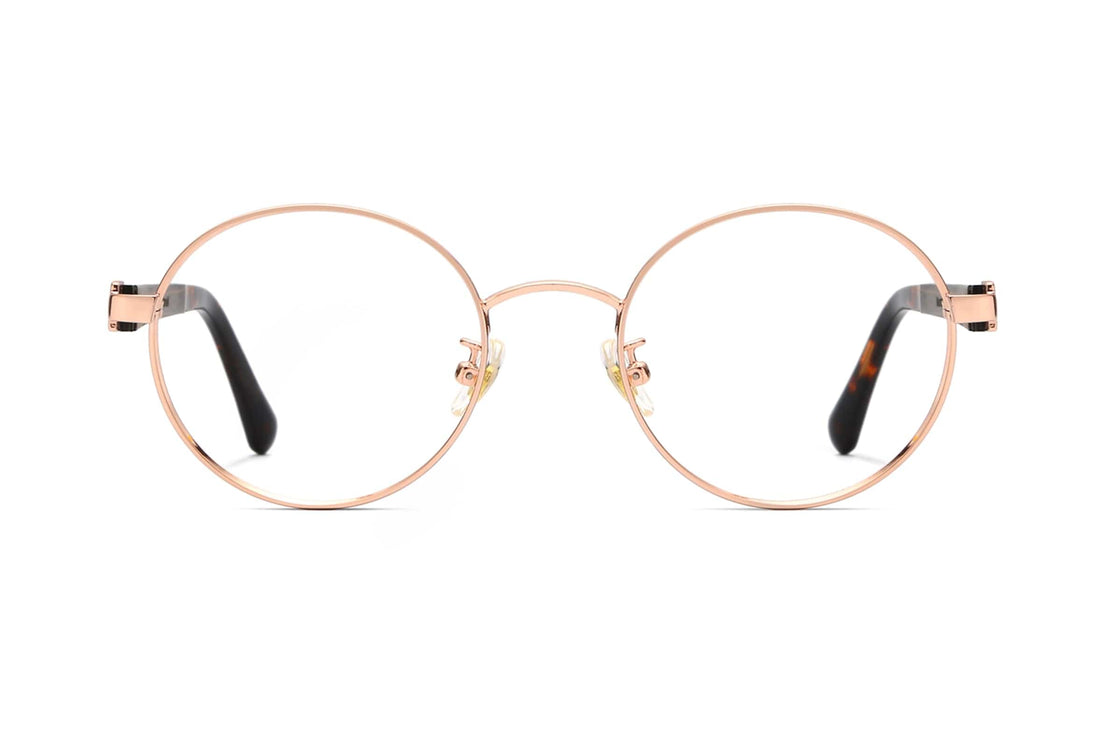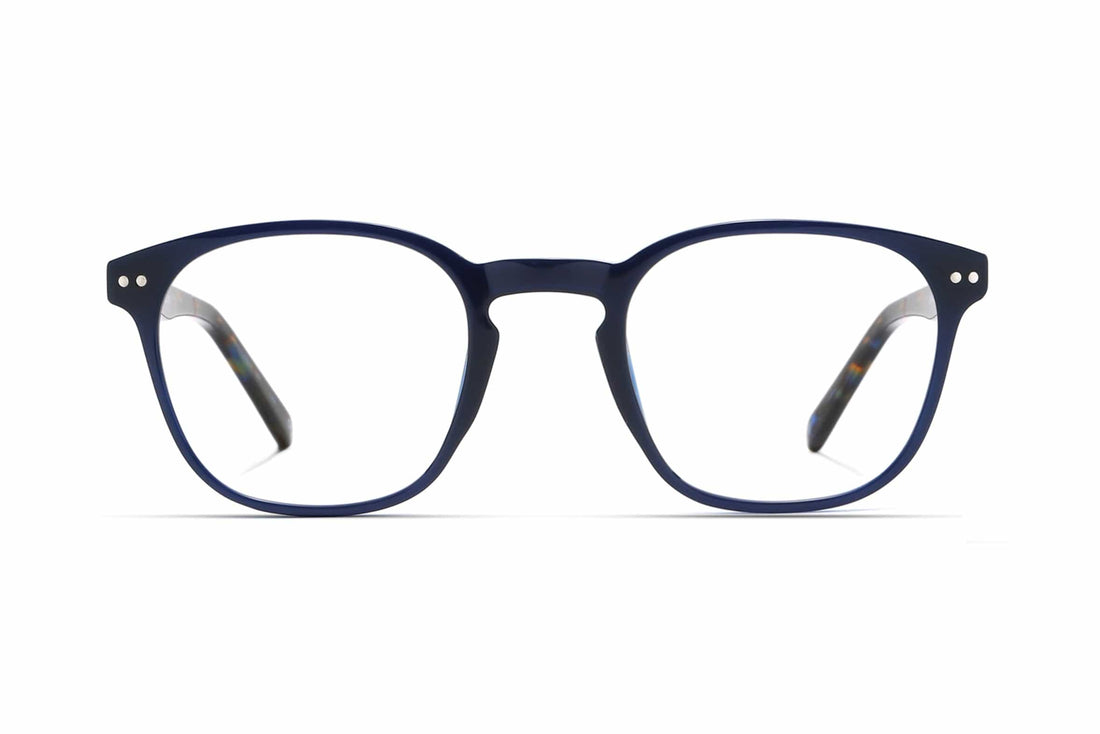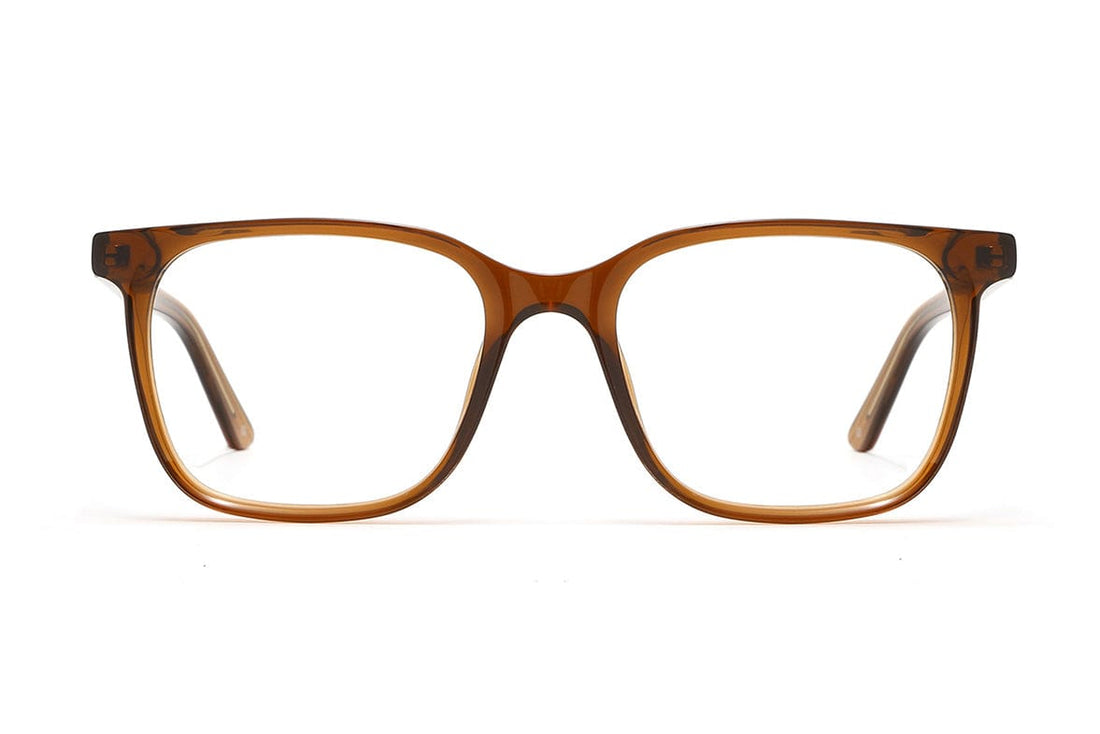
What Is Eco-Friendly Glasses: Redefining Sustainable Fashion
What Is Eco-Friendly Glasses
9 min read • Posted on 24 July 2024
There is widespread interest in sustainable living today, and the glasses are charged with eco-friendliness. With these stylish spectacles, the wearer can see the world from a different perspective with a guilt-free conscience.
They are crafted from sustainable materials such as recycled plastic, biodegradable acetate, and ethically sourced wood, so they are changing the face of the eyewear industry for the better. As the eyewear industry acknowledges the environmental issues surrounding sustainability, so does the broader fashion industry.
Yet there is more. What are green glasses beyond the material choice? They are made ethically, using practices that ensure that each pair of sustainable sunglasses you put on has a smaller ecological footprint than before. This is not just a pair of glasses. It is a statement that the future can be beautiful and responsible.
What Makes Eco-Friendly Glasses Sustainable
The frames are built to prioritize sustainability, using M49 bio-acetate, a plasticizer made from natural resources such as cottonseed fiber and wood, and recycled plastic chips scavenged from bottles headed for landfills or oceans.
Timber from sustainable forests helps prevent deforestation, while biodegradable acetate will decompose beautifully at the end of its life without leaving a trace of toxic remains. Each material, even made from natural resources, is selected thoughtfully to guarantee the highest quality while minimizing the environmental impact.
The manufacturing process is just as significant here. Insisting that their glasses are made from recycled materials, brands emphasize repurposing, using water bottles, milk bottle tops, wood chips, and beer keg lids in their recycled glass frames. This focus on turning trash into treasure drastically aids in reducing waste and the carbon footprint of the products.
Renewable energy (solar or wind, for example) powers the factories, too, while water use is kept to a minimum thanks to cutting-edge techniques. The leftover waste from the manufacturing process is recycled or reused, leaving a minimal amount to be discarded. This ‘cradle-to-cradle’ approach combines ethical and rational thinking with every pair of glasses made in a process that aims to be as sustainable as possible.
Manufacturing Process: Energy-efficient, low-waste production practices
Making green glasses isn’t just a question of choosing suitable materials; it’s about producing that optimizes energy with low water use and minimal waste. At the point of manufacture, energy comes from renewable sources, while water use reduces waste and is kept to a minimum. Waste materials are recycled and reused in further production, adding another green dimension.
From those frames to how the pieces are finally put together, it has been a long process that is the product of careful craftsmanship. Some manufacturers are experimenting with 3D printing, which utilizes less raw material and allows the finished product to be more uniform, practices that help enforce the ‘reduce, reuse, recycle’ mantra that eco-enthusiasts often repeat.
Materials: Recycled plastic, ethically sourced wood, and biodegradable acetate
The ecological basis of eco glasses starts with their materials; waste was once recycled into plastic. Now that plastic gets a second chance at life as fashionable, comfortable frames, ethically sourced timber turns everyday frames into works of art in their organic beauty and lightness.
At the same time, biodegradable acetate, one of the oldest cellulose materials, elegantly bridges the aesthetic and sustainability divide by degrading over time, leaving behind nothing. And some of the frames use organic cotton, a nod to the use of recycled plastics and organic textiles that pass rigorous standards for sustainability.
Recycled plastic keeps waste out of landfills, ethically sourced wood is often also sustainably grown, and biodegradable acetate means even synthetic materials are welcome on Earth for a short time. Organic cotton brings the whole product back to nature because it’s sustainably grown and processed.
Each of these materials has been carefully reviewed to provide a sustainable replacement of organic glasses with cheap glass alternatives; at the same time, it ensures quality and comfort to give a pair of glasses that combines fashion and environmental concerns.
What are Different Materials of Eco-Friendly Glasses
Sustainable glasses come in various eco-friendly materials, allowing you to choose a pair you like that reflects your tastes. Wood glasses frames, for instance, exude a cozy and rustic vibe that matches a natural lifestyle. Manually assembled by artisans from timber certified by the Forest Stewardship Council, usually bamboo or maple, every pair has its distinctive pattern and is genuinely unique.
Meanwhile, recycled metal frames are the modern-day embodiment of stylish sustainability. Repurposed aluminum or steel has become fashionable eyewear that sparkles with space-age allure. Those who prize pliability will eagerly turn to acetate, derived from natural plant materials, for its colorful palette and classic shapes. Hypoallergenic by nature.
Then, natural biodegradable frames made of bioplastics such as cornstarch can return to nature, reduced to nothing. Other eco-friendly materials are used to create prescription glasses.
Wood Glasses
From a fashion standpoint, a pair of eco-friendly wood glasses brings sustainable fabulousness while offering a rustic style that is both charming and hard-wearing. Frames made from sustainably sourced wood have natural grain patterns, meaning no two pairs are alike.
The natural tints are light, earthy tones that anyone who likes natural textures will find appealing and provide a defined style. Wood frames are lightweight yet robust, hypoallergenic, and don’t feel heavy or hot on the head all day.
These frames' all-natural, homespun feel also boldly declares eco-consciousness; their organic design harmonizes beautifully with a minimalist or bohemian wardrobe, reflecting an eye for sustainably sourced natural beauty.
Recycled Metal Glasses
Glasses made from recycled metal? Now, that’s eco-fashion and a step up from recycled nylon. So where does it come from? Which metal? Salvaged scraps of aluminum collected from airplane manufacturers (did you know that aluminum is the most recycled material in the world?). Sometimes, recycled metal is repurposed from steel scraps. These eco-friendly metal glasses are lightweight, sleek, and often look extra-futuristic because they sport narrow frames and metal lenses. And the colors are typically excellent.
Acetate Glasses
Made of cotton and wood pulp, these eco-friendly acetate glasses represent plant-based ingenuity and manufactured fibers that give hypoallergenic frames more than 1,000 color and finish options, from bold colors and clear pastels to chic tortoiseshells. Eco-acetate glasses are all about style and comfort, not just sustainability.
These lightweight, perfectly contoured frames fit your face like a glove. Striking a nice balance between assertive and understated, acetate frames are just what the optometrist ordered. Scratch-resistant and durable, they are as elegant as they are practical and appropriate for everyday wear.
Biodegradable Glasses
Biodegradable glasses are the pinnacle of an eco-friendly attitude. They are designed from materials that fall apart or degrade into nature. Frames made from bioplastic polymers based on cornstarch, bamboo, and other renewable resources look good and leave no trace in landfills at the end of their lifecycle. They are light in weight and flexible enough to be comfortable to wear for extended periods.
These glasses are fashion-forward without overstaying their environmental welcome. Once discarded, they will degrade. For those who want to let it all hang out in the name of fashion, biodegradable glasses allow you to wear sustainability on your sleeve.
Packaging: Minimalist, recyclable, and compostable packaging solutions
An environmentally conscious pair of glasses purchase is not complete until they’re also shipped in an ethically minded way. Packaging is minimal in material and design, using as little as possible to protect the frames and limiting the amount of packaging we ship out. Packaging options include recyclable cardboard, compostable bioplastic, and fabric cases made from upcycled apparel.
Every box, pouch, and badge has a point without being ostentatious. It’s a little like unwrapping a present that respects the planet. When brands deliver this way, they show us there’s a route from factory gate to face without footprints.
Stylish Designs in Eco-Friendly Glasses
Green doesn’t mean drab; so many styles are available that you can choose your glasses from a veritable spectrum of options as comprehensive as any in a conventional high street store. One trend is the sleek, clean, modern look from designers who bring a sustainable twist to classic designs, such as the cat-eye or the aviator, in biodegradable acetate or ethically sourced wood, or the retro optics that gets a little old-school excellent back in style, or the transparent or translucent color palette that celebrates the beauty of the design itself.
For the brave and imaginative, the ubiquitous ‘frame within a frame’ makes eco‑chic eyewear a canvas for collectors and connoisseurs, with oversized, geometric shapes and fluorescent colors enhanced by the avant‑garde, angular frames.
Styles are limitless, so wearers can be original and reduce their carbon footprint. Several sustainable eyewear brands are creating stylish, sustainable sunglasses that leave less impact and more positivity on the planet.
Classic Frames: Timeless shapes with a sustainable twist
Timeless cat-eye or aviator frames, retro, nostalgic shapes but reinvented in a biodegradable acetate, bamboo, or something else more environmentally friendly and conscious. It’s the old favorite you used to know, but it's now made sustainable.
Such frames juxtapose a familiar, classic silhouette with vivid, earthy tones. They’re a tip of the hat to tradition that’s also a wink toward tomorrow. Drinking through them feels like inhabiting a sophisticated, eco-friendly state of mind that one can blend into daily life calmly and comfortably. It's yet another way that eco-living can be embraced unassumingly and gracefully.
Modern Trends: Bold styles, vivid colors, and sleek designs
Eco-chic eyewear today embodies the best of both worlds, uniting brashness with brilliance. Electric-blue, sunflower-yellow, or ruby-red frames launched a colorful counteroffensive against standard frames' beige and black milieu. Sculptural, space-age forms fight for both the environment and the right to be seen.
Moreover, creating glasses from recycled skateboard decks sends a message about environmental consciousness, proving that rubbish can catch a second wind and be transformed into stylish eyewear.
Yet, these designs do not shrink from showcasing their personality. From giant geometric frames to angular designs in neon hues, these glasses show that you don’t have to forgo style to be a more sustainable shopper.
Customization: Personalize with lens coatings, colors, and engraving
Eco-friendliness gets an extra boost of humanity when personalization attempts to appeal to individuals through ergonomics, branding, or aesthetics. Lens coatings that filter blue light or reduce reflections bring added functionality to everyday sunglasses. Colors mean you can choose frames that appeal to your mood, wardrobe, or lifestyle (should you want to channel earthy, hippy vibes or exude vibrant pastels).
The final flourish is your handwriting on the engraved glass that secures each pair. A bespoke monogram, a favorite quotation, an enigmatic symbol, every frame a signature. Eyewear as an accessory. Eyewear as a canvas. Eyewear as an artifact. Eyewear as you.
Benefits of Wearing Eco-Friendly Glasses
You can flex your green muscles when you wear green glasses and show them off. The frames are not only good for the environment but beautiful, too. Reusing plastic, recycled materials, and wood from sustainable sources helps the environment by reducing waste and consuming fewer natural resources. Recycled plastic keeps discarded and polluting materials out of landfills or incinerators. Sustainably harvested wood comes from forests that avoid cutting more than their trees can grow.
Every pair has helped to shrink the fashion industry’s waste problem. These eco-friendly glasses are referred to as a vehicle for sustainable eyewear, primarily focusing on their core environmental value. Recycled water bottles, repurposed skateboard decks, and organic cotton further support this.
Green glasses are also made for your health. The materials are non-toxic and safe for your skin, and some coatings protect your eyes from the sun’s harmful UV rays. They’re lightweight and durable, built to withstand regular wear and tear. They come from brands that are committed to safe labor practices. In other words, your fashion statement is a sign of better times.
Environmental Impact: Reducing waste and conserving resources
Sustainable specs keep tons of material waste out of landfills, recycled plastic means fewer bottles and containers in the ocean, and biodegradable acetate implies that even the frames you don’t want anymore won’t haunt the planet for centuries.
Every eco-friendly pair of sunglasses helps conserve resources, as fewer gallons of water and less renewable energy are used to make the glasses. A clearer view means a more transparent future for our planet.
Health and Safety: Non-toxic, skin-friendly materials
Eco-friendly frames are easy on the skin because they’re made with non-toxic materials. Conventional frames might irritate the skin, but sustainable styles avoid irritants. Acetate or ethically sourced wood prevents allergens or toxins from infiltrating the nostrils.
Lenses coated to block UV rays or glare from your computer, for example, protect your eyes from damage or strain so you can wear them all day without worrying. They provide style with health benefits that only you will know.
Social Responsibility: Supporting brands with ethical labor practices
Companies manufacturing affordable, low-cost eco glasses apply ethical standards to their supply chain, paying fair wages and ensuring safe working conditions. They contract with suppliers who respect workers’ rights and do not allow exploitation.
You’re picking glasses that both retailers care about people, not just the planet. You’re voting with your wallet for a sustainable fashion and industry that practices honesty, heart, and mind and cares about where its materials come from.
How to Choose the Right Eco-Friendly Glasses
But starting with a frame shape developed with your face in mind is the first step towards eco-friendly glasses that make you look and feel great, angular frames. Dignified angular faces look best in round or oval frames that round out narrow lines and soften hard edges. If you’re feeling daring, don’t be afraid to go bold.
Then, pay attention to lenses. UV protection and blue light filtering are essential for eye protection, particularly for those who spend a lot of time in the sun or front of their screens. And, of course, make sure the brand you buy from aligns with your values. Prioritize transparent sourcing and fair labor conditions so your new frames support people and the planet.
Frame Shape: Find a shape that complements your facial features
Nothing so much as pumping iron is responsible for getting the frame shape right; angular faces look great in angular rectangular or square shapes, while rounder faces suit rounded ones. Ovals suit pretty much any shape, so go wild.
Don’t be shy, experiment. Trying different shapes helps you find that particular frame that looks like it was made especially for you. The right frame should make you smile.
Lens Quality: Prioritize UV protection and durability
Lenses matter. Find lenses that protect your eyes from UV rays, whether hanging out at the beach or walking under winter clouds. A polarised coating moves light around and away from your eyes to minimize glare, which is especially helpful when driving or enjoying the beach.
Durability is critical, too, as scratch-resistant coatings and impact-resistant materials will ensure you can keep your lenses while enjoying life’s little bumps and scrapes. What’s the point of new designer glasses if you can’t see out of them?
Brand Ethics: Look for transparent sourcing and manufacturing practices
Choosing a company or brand that uses transparent sourcing and ethical manufacturing helps ensure your buying aligns with your values. Look for retailers who embrace sustainable practices by openly discussing their supply chain and those who work with responsible manufacturers.
The brands that do care will readily tell you their story (often online or on their packaging). When you buy or wear their glasses, you know you support fair wages, eco-friendly initiatives, and a commitment to sustainable sourcing.
Conclusion
From fashionista to practicality, if you’re buying glasses, eco-friendly specs have something for you. Why not express yourself while also helping out the green planet? Show the world your style and start a conversation about sustainability.
From choosing a pair of eco-glasses to opting for an eco-conscious brand, it’s a conscious act of voting with your dollar to support companies that mirror your value. You can be as stylish as you want, even more so, without sacrificing your sense of eco-consciousness. So, change your perception and replace it with optimism for a green and clean future. Love eco-friendly eyewear? Check out our latest content.
 Kraywoods
Kraywoods








